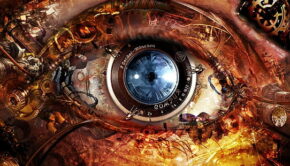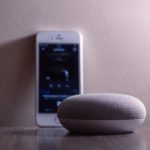Beyond Wearable Technology: The Future of Fabric
Where is the future of fabric going, in terms of new technologies? From new fabric creation techniques to integrating microelectronics, the future of fibers/fabrics goes well beyond wearable technology. Let’s look at a couple of examples of how fabric is improving and its potential uses.
Smart Jackets
Merging electronics and fabric has been a sci-fi fantasy for many years, with actual applications tending to be small or little more than gimmicks. However, technology is finally catching up.
Smart jackets combine GPS and smartphone technology with the ability to control your music. They often have integrated batteries to charge your devices. Using GPS tracking, the jacket will sound an alarm if you go too far away from your phone or a piece of luggage with a tracker attached. Ports for earphones, or integrated earphones, allow you to plug in or connect via Bluetooth to your phone.
Google is working on its own version, the Jacquard, which even allows you to take a call or control your music without touching your phone. Instead, users can tap or brush the cuffs, which have touch-sensitive threads woven into the denim, allowing you to control your phone, including getting directions to your destination.
“The conductive metal alloys used are incredibly thin, so they can be combined with a variety of natural and synthetic fibers,” Google says on their site. “Once spun, Jacquard Threads have the weight and feel of normal yarn. Because they look, feel and perform like any other yarn, they can be woven using traditional techniques and equipment. The result is a wide variety of interactive textiles that are indistinguishable from regular textiles.”
Fitness and Health
The future of fabrics is more than just “cool technology” that helps you interface with your phone. It’s also being applied to the fitness and health worlds.
MIT has successfully woven fabric with a layer of latex containing bacteria. This biofabric holds two layers of bacterial cells, between 1 and 5 microns thick, around 1/15th the width of a human hair and about the same diameter as a red blood cell. This latex was applied to the back of workout clothes as flaps. When the bacteria detects sweat, the cells on the side facing the body absorb the moisture, expanding and forcing the flaps open, providing a vent to cool the wearer off. Unfortunately, the MIT team has not yet proven its durability through wash cycles.
For those with an active mindset, a lightweight jacket can help them power their small electronics. The jacket, developed at University of Massachusetts Amherst, uses pliable, breathable, metal-free electrodes. By jogging and creating friction, the electrodes generate enough electricity to power a phone or similar device.
The movements of the layers of fabric against the electrode generates the small currents, dubbed triboelectric charging. The electrodes have layers of fabric in between them, with the coat fabrics coated in conducting polymers. The coating is only 500 nanometers thick and still feels like regular fabric. It was tested with multiple fabrics, including five cottons of different weaves, silk, and linen.
Another application targets yoga practitioners. Nadi X yoga pants have an attachable battery that power 10 haptic motors at the knees, hips, and ankles. The pants connect to a smartphone app, which guides you through a yoga routine. If your pose is off, the haptic motors activate to know which part of your legs to focus on and fix. The battery can be removed to wash the pants, which are machine-wash durable.
If you are looking to improve your sleep quality, Under Armour now offers smart sleepwear. Woven with bioceramic fabric, it reflects heat back into the body, using what’s known as far infrared energy. This aids in muscle recovery, especially post-workout, and improves blood flow. Users have reported not only recovering faster, but falling asleep faster as well. The shirt itself feels heavier than normal, according to one user review, but that it is also made of very soft fabric. The sleepwear is perfect for athletes after a hard day of training in order to help their body recover from an intense workout.
Gloves
While perhaps not as flashy as the other examples, gloves can be extremely important in certain professions. For example, they can helpful to a librarian or archivist. They might handle extremely old, fragile books, and not damaging the books is of the utmost importance. The problem is that even the oils from your skin can damage a book. In older gloves, a large amount of fibers or particles can be shed from the gloves themselves, which can also damage older materials.
To solve that, gloves made with a single, continuous filament, in pre-shrunk nylon were created. Because it’s completely seamless, the nylon will not run or unravel, and it sheds significantly less than older nylon gloves.
Latex gloves can be worn on top of these gloves as well. The nylon will wick away moisture, preventing contact dermatitis as well.
They also come in half-finger versions, which are meant as liners for latex gloves, allowing for maximum dexterity and fingertip sensitivity while still wicking moisture away from palms. For someone like an occupational health and safety specialist, this could be extremely important. They might have to wear gloves during an entire inspection, which could become uncomfortable and even dangerous if the gloves start slipping. They could be inspecting potentially dangerous materials that require gloves to handle safely, such as in a laboratory clean room.
The future of fabric holds promise in many areas. From helping athletes train better to improving yoga poses, from protecting old books to improving your morning jog, the future of fabrics is bright.

















